Does Your Dog Really Love You - Or Food?
Marc Bekoff, Unleashing Your Dog
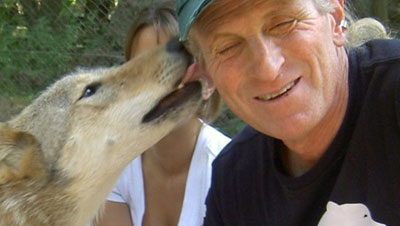 Are our dogs trained to show affection in order to get food and treats? Do they really unconditionally love you, or would they "kick you to the curb" for bacon? Animal Researcher Marc Bekoff answers these burning questions and more. He says we can 'unleash our dogs,' metaphorically speaking, by allowing them to roll in dead worms.
Are our dogs trained to show affection in order to get food and treats? Do they really unconditionally love you, or would they "kick you to the curb" for bacon? Animal Researcher Marc Bekoff answers these burning questions and more. He says we can 'unleash our dogs,' metaphorically speaking, by allowing them to roll in dead worms.
Marc Bekoff is a Professor Emeritus at the University of Colorado and focuses on the behavior and the psychology behind dogs. You may have asked yourself the question, "Does my dog really love me or has he learned to do things that look like love, but really comes down to food?",,According to Marc, your dog loves you! Although he doesn't know the relationship of everyone and their dog, he states there are a lot of theories out there that dogs do use us for food, for cuddling and for going to the dog park or whatever. But Marc doesn't believe that at all. He thinks it's all part of the very positive and long-term relationships we build with our canine companions. So even though he doesn't know everyone and their dog, he will wager that your dog loves you.
'Unleashing Your Dog' is Marc's new book and he says we should unleash them and let them be dogs. He means this in a metaphorical way and not to literally take the leash off your dog and let them run where there could be harmed. However, he feels we should let them be dogs and give them as much freedom as possible. One of his messages is that even when a dog is being walked on a leash or some kind of tether, you can basically give them a 'loose leash' and let them sniff as much as they want. Part of the 'unleashing' is that even if they are on a leash, the walk is really for them. So let them sniff and eventually they will learn at some point that you only have 15, 20 minutes or half hour. But 'unleashing' them really means giving them agency or giving them the control and the ability to make choices and to let them be a dog.
One such thing circumstance where we should 'unleash' our dogs is to let them roll in dead, stinky things. Of course, our first instinct is to yell at them and get them to stop. Marc explains that dogs will roll in things that are terribly offensive to us and that sometime we just have to stop them. However, they like to roll and Marc says let them roll until their heart's content. But on the other side, there are going to be times when it's not appropriate. For example, Marc lives in the mountains and if he were to go out with his dogs and they were running and rolling in some putrid stuff, when they were done, he would put them then in their big outdoor run and they would stay there until the odor dissipated. But, if he knew he was going to town with them, he would stop them from rolling and put them in the car. He adds that he doesn't think they suffer from any psychological disorder because he occasionally stops them from rolling in putrid things.
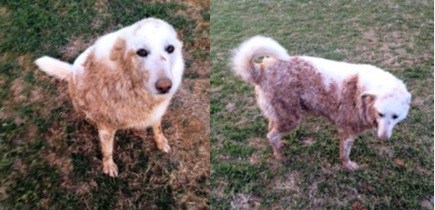 Another way to 'unleash' your dog is if your dog likes the dog park, take them and let them romp with their friends. Marc explains that the bottom line message is to become fluent in 'dog' or becoming 'dog literate.' That means that you understand that when dogs are playing roughly, it's not necessarily going to escalate into a fight. In fact, rough play escalates into serious fighting less than 1-percent of the time. So it means letting them interact with their friends. It means letting them roll and letting them taste certain things that we all find utterly off putting. It's not unusual to see someone walking their and after the dog poops, they just pull them back in. What they don't realize that the sniffing around is like Facebook for us, sort of like 'pee mail,' for them.
Another way to 'unleash' your dog is if your dog likes the dog park, take them and let them romp with their friends. Marc explains that the bottom line message is to become fluent in 'dog' or becoming 'dog literate.' That means that you understand that when dogs are playing roughly, it's not necessarily going to escalate into a fight. In fact, rough play escalates into serious fighting less than 1-percent of the time. So it means letting them interact with their friends. It means letting them roll and letting them taste certain things that we all find utterly off putting. It's not unusual to see someone walking their and after the dog poops, they just pull them back in. What they don't realize that the sniffing around is like Facebook for us, sort of like 'pee mail,' for them.
'Unleashing 'also refers to understanding how their senses work. The whole book is built around the five senses of dogs. It really means understanding a dog and understanding dogs as individuals. Do they like loud music? Do they not like loud music? We stress that we shouldn't be pouring perfumes and deodorants all over them because they like their own doggy smells for example.
What about clothing on your dog? Marc states that if it doesn't harm the dog, it's not restrictive clothing and it doesn't smell strongly of some detergent and it makes the human feel good and improves the relationship with the dog, then that's okay. This is actually part of 'unleashing' the human. The bottom line is dogs don't care. They don't care if their nails are painted. They don't care if you put clothing on them as long as it doesn't restrict their movement. They don't care what the color of the clothing is, whether it is pink, green or paisley or even tie-dyed. Does Marc put clothing no his dog - no. Does he think it's bad for the dogs - no, not necessarily. People need to understand that their dogs don't really care.
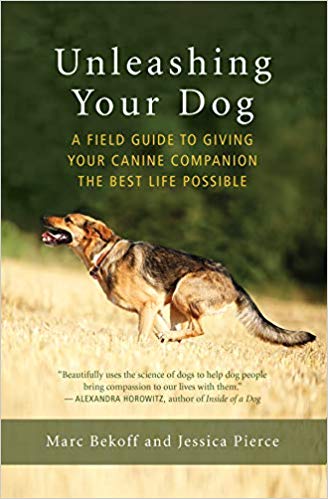 If you know your dog well, you can tell if they enjoy clothing or not. If they don't' like it, they will try to get it off if they're uncomfortable. But if your dog gets very excited with clothing and you're giving them attention and they feel the love, then it's okay. Marc says this may sound so silly to say, but it's far better than yelling at them or telling them 'no' all the time. So there are certain things that people do like dressing their dogs up, but if it works for both of them, that's fine.
If you know your dog well, you can tell if they enjoy clothing or not. If they don't' like it, they will try to get it off if they're uncomfortable. But if your dog gets very excited with clothing and you're giving them attention and they feel the love, then it's okay. Marc says this may sound so silly to say, but it's far better than yelling at them or telling them 'no' all the time. So there are certain things that people do like dressing their dogs up, but if it works for both of them, that's fine.
Another bottom line message of Marc's book is that the relationship is one of mutual tolerance, reciprocal respect and trust, if you will. We are always negotiating with our dogs, so the main message is that whatever you do has to be good for them and us.
Just like most people, sometimes Marc finds himself doing things with his dogs that he doesn't necessarily want to do. But he does these things, because his dogs love it and the rest of their time, they're captive. That's another underlying theme, not in a negative sense. But think about it, we tell them when they can eat, who they can play with, what they can eat, when they can poop and pee and go outside and get exercise. So freeing them up, 'unleashing' them really is the way to give them the most freedom possible in a human oriented world.
Marc tells us he was talking to a few people couple of weeks ago at one of his local dog parks. That's when he came up with this phrase that you can 'unleash' a leashed dog. He says they got into a long discussion and a lot of it focused on allowing dogs to sniff when they're on a leash, allowing them to stop and wiggle their ears or move their head because they likely hear something that we don't hear. So that's exactly what it is about. Once again, it all boils down to giving our dogs the most freedom that they can possibly have in the situation in which they live.
Visit Website
Combining Passions For The Pets
Meredith Veit, All Pets Transport
 You're lucky if you get to work with your pet. You're even luckier if you can combine your passions for the ideal job. Merebeth Veit has two passions - wanderlust and a love for animals. She dumped her real estate job for transporting pets nationwide. She's driven hundreds of animals to their destination while sightseeing the country. And yes, it pays the bills.
You're lucky if you get to work with your pet. You're even luckier if you can combine your passions for the ideal job. Merebeth Veit has two passions - wanderlust and a love for animals. She dumped her real estate job for transporting pets nationwide. She's driven hundreds of animals to their destination while sightseeing the country. And yes, it pays the bills.
Merebeth lives in South Carolina and accidentally happened upon pet transporting. She was heading to work one morning and decided to take another route. Up ahead she saw a puppy standing in the middle of the street. So she pulled over, picked him up and went to the nearest house. There, she found five more puppies on the porch. They were about three months old. The owner came out and after she talked to him for about 10 minutes, he allowed her to come back and get all of the puppies.
Now, what was she going to do with all of them? Her sister lives in Denver and she wanted one of them. Merebeth didn't want to fly the puppy, so she drove it to her sister's house instead. When she arrived, she told her sister that she thought she could do this as a business, as she loves to drive and has always loved animals.
Surprisingly, Merebeth says her pet transport job pays the bills. So far, she says she has probably transported more than 100 pets. She receives a lot of referrals and works with people that are involved in rescues and will even relocate animals to other shelters. The last job she did was a couple that was moving from Maryland to Oceanside and she took their three cats.
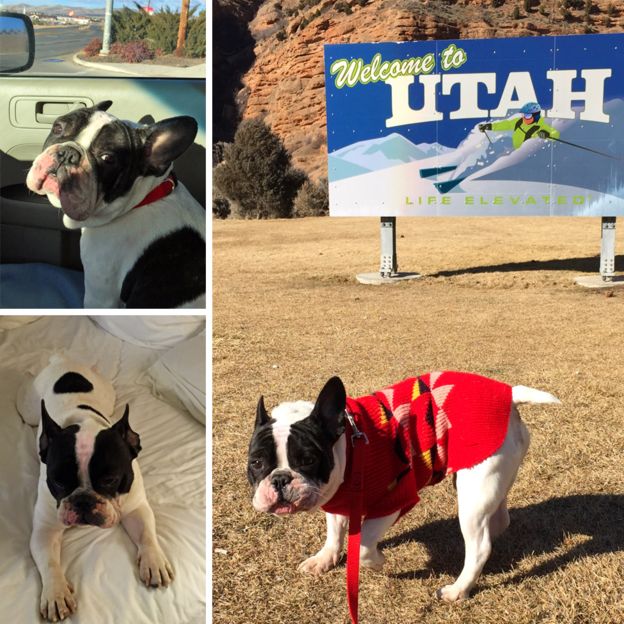 Sometimes during a transportation Merebeth becomes attached to the animals. She says this happens many times. She tells us that if it's an adoption or someone has purchased a puppy, she doesn't really know where these animals are going. So sometimes she has apprehension because she's grown so attached to them. About 99-percent of the time she's very, very happy when she gets them to their destination because the people are warm and loving. But, there have been a couple occasions where she wished she could just drive off with that animal in her car and keep it forever.
Sometimes during a transportation Merebeth becomes attached to the animals. She says this happens many times. She tells us that if it's an adoption or someone has purchased a puppy, she doesn't really know where these animals are going. So sometimes she has apprehension because she's grown so attached to them. About 99-percent of the time she's very, very happy when she gets them to their destination because the people are warm and loving. But, there have been a couple occasions where she wished she could just drive off with that animal in her car and keep it forever.
It's no surprise that after doing pet transporting for many years, Merebeth has some stories. She tells us her worst transport, or most annoying transport, was a cat who was super sweet and named 'traveler.' He was a rescue from Clarkesville, Georgia that she was taking to Richmond, Virginia to a lady who had adopted him. Merebeth says the cat meowed but entire time she was driving. She turned the music on, she talked to him, she did all the things that she normally does to calm anxious animals. After a few minutes they usually calm down and are quiet. However, the only time that this cat stopped meowing was when she stopped her car, like in a rest area. Merebeth says that the cat needs to have his name changed because that's not a good name for him!
It's easy for Merebeth to transport animals, as she has rapport with them. For the most part, she thinks they sense that. She also glad she started her business, as she really loves it and has seen so many parts of the country that she's pretty positive she would have never seen.
It's Not Doggie Asthma - It's a Reverse Sneeze - Dr. Debbie
 What dog owner hasn't heard that frightening sound that dogs make - part cough, part sneeze and often described as a dog being unable to catch his breath. But it really isn't asthma, or some kind of bone stuck in your dog's throat - it's a reverse sneeze. So before you panic and run into the veterinary office on emergency, ensure you know what a reverse sneeze is.
What dog owner hasn't heard that frightening sound that dogs make - part cough, part sneeze and often described as a dog being unable to catch his breath. But it really isn't asthma, or some kind of bone stuck in your dog's throat - it's a reverse sneeze. So before you panic and run into the veterinary office on emergency, ensure you know what a reverse sneeze is.
Meet the Reverse Sneeze
A reverse sneeze is a respiratory sound in a category all its own. Also known as a pharyngeal gag reflex or backwards sneeze, the reverse sneeze is a commonly observed respiratory sound in dogs, and less commonly in cats. While a true sneeze occurs on the exhale, the reverse sneeze occurs as the dog inhales. The result is a reverberating snorting, wheezing, episodic sound that lasts for a few seconds to a minute or two. A reverse sneeze is a completely harmless sound and dogs do not suffer any immediate health threat from these episodes.
How can you tell it's a reverse sneeze?
There is no easy explanation of the sound - you just have to hear it and you'll recognize it. Click to see and hear an example of a dog's reverse sneeze episode.
Part of my enjoyment on the weekly national radio program, Animal Radio®, is describing the peculiar smells, sounds and essences of veterinary medicine with our listeners. On many an occasion when speaking to callers, I have re-created the sounds of reverse sneezing. I'm no Rich Little, but I do take pride in my impersonation of a canine reverse sneeze, which is admittedly better in person with the visuals to complement the throaty sound.
Characteristics of a dog displaying a reverse sneeze include:
- Vibrational coughing/wheezing sound
- Stiff, extended neck
- Facial grimace
- No discharge from nose
- Not followed by coughing or vomiting up material
- Not involving collapse episodes
- Animal is completely normal after event
What causes a reverse sneeze?
Some reverse sneeze episodes occur when a dog gets very excited or pulls against a leash. Brachycephalic breeds (short faced breeds) like Pugs and Boston terriers commonly display reverse sneezing due to their upper airway conformation.
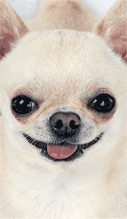 Allergies, respiratory infections, nasal mites, inhaled foreign bodies and masses can also trigger reverse sneezing. Dogs with inflammatory conditions such as lymphoplasmacytic rhinitis can also display bouts of reverse sneezing. And sometimes reverse sneezing occurs in the wee hours of the night, while a dog is sleeping, for no apparent reason. In fact, many veterinarians receive panicked phone calls at 2am from pet owners, concerned of impending asthma attacks or respiratory arrest, only to have it turn out just to be a typical case of reverse sneezing.
Allergies, respiratory infections, nasal mites, inhaled foreign bodies and masses can also trigger reverse sneezing. Dogs with inflammatory conditions such as lymphoplasmacytic rhinitis can also display bouts of reverse sneezing. And sometimes reverse sneezing occurs in the wee hours of the night, while a dog is sleeping, for no apparent reason. In fact, many veterinarians receive panicked phone calls at 2am from pet owners, concerned of impending asthma attacks or respiratory arrest, only to have it turn out just to be a typical case of reverse sneezing.
What to Do?
There is no required treatment for a reverse sneeze episode. However, I recommend stroking a dog's throat while gently speaking to him in a calm manner until the episode subsides. Some advocate closing/pinching the nostrils off, which forces a dog to swallow and curtails the reverse sneeze episode. Whatever the approach, reverse sneezing episodes are over within minutes, so no emergency treatment is indicated. Antihistamines may be prescribed to minimize reverse sneezing episodes.
When to Worry?
If all of a sudden your dog is having repeated bouts of reverse sneezing, evaluation by your veterinarian is indicated. Consult with your veterinarian if your dog is reverse sneezing along with other symptoms such as facial rubbing, nasal bleeding, nasal discharge, coughing, or significant sneezing episodes.
Nasal mites are a common cause of reverse sneezing and may be noted after a recent boarding visit, especially if multiple dogs in a household are involved. Nasal mite treatment is easily pursued with anti-parasite injections of ivermectin (or in collie breeds - the alternative Milbemycin.) If reverse sneezing is excessive and prolonged, the nasal and pharyngeal areas should be evaluated by a veterinarian through rhinoscopy - a procedure performed under anesthesia in which the nasal passages and pharyngeal areas are visualized with an endoscope, a micro camera. This is how foreign objects and masses are typically identified. In other cases, further tests may be needed including a CT scan or with biopsy samples from sinus passages.
Final Thought
The good news is that most of reverse sneezing episodes are harmless, and do not indicate any serious illness. Arm yourself with information by learning what a reverse sneeze looks like and you may save yourself an unwanted emergency veterinary visit over this peculiar but non-life threatening occurrence.
Featured veterinarian known as "Dr. Debbie" on national pet radio program, Animal Radio. Ebook author of "Yorkshire Terriers: How to Be Your Dog's Best Friend"; "Pugs: How to Be Your Dog's Best Friend"; "Mini Schnauzers: How to Be Your Dog's Best Friend"; and "Shih Tzu: How to Be Your Dog's Best Friend." Dr. Debbie's books.
Visit Website
 The Dogfather's Grooming Tip with Joey Villani
The Dogfather's Grooming Tip with Joey Villani
Cleaning a Dirty, Smelly Cat
Joey has given tips on bathing dirty cats in the past. One such way was the bucket way. You get two buckets and fill them halfway with water. You add pet shampoo to one of them and use the other to rinse your cat. You then dip your cat into the shampoo bucket and when you're done, you dip them into the clean water bucket to rinse them. This is usually less scary for them, as you don't have the sound of running water.
However, this doesn't work for all cats. Another way was to apply cornstarch to their fur. Joey recently heard from a woman who tried the cornstarch and while the cat visually looked cleaner, they still had a strong urine odor.
It's real easy to get rid of the odor by using white vinegar. Just get a quart size spray bottle and add a 16th of a cup of white vinegar. Fill the remainder of the bottle with distilled water, which works best. Distilled water is not going to leave any minerals behind on the cat, which can stain them. Next, add one drop of dish detergent. The reason why you want to add the dish detergent in there is because the product needs something to hold onto. If you don't add this, the spray will run right off them. If you put a drop of some type of soap in there, it's going to hold on to the coat.
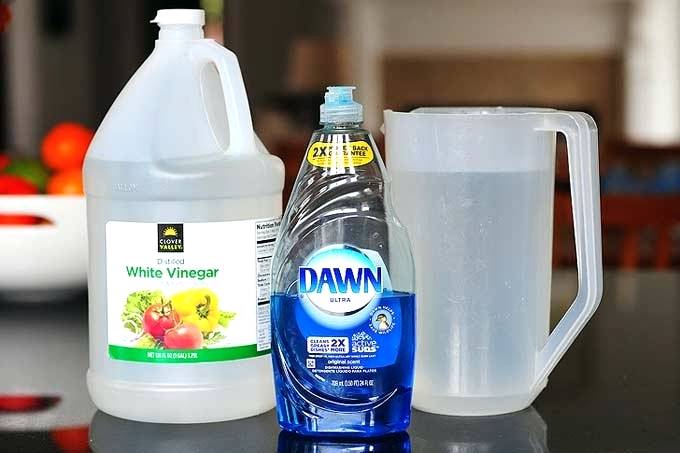 You want to just mist the cat with this mixture. If your cat doesn't like the sound of the sprayer, you can also sponge it on them. You want to especially target the areas that smell really bad. Again, don't saturate your cat, just mist them. When you have done this, sprinkle cornstarch over the cat. What the cornstarch is going to do is to pull out the dirt and oils while the vinegar spray is going to take out the odor.
You want to just mist the cat with this mixture. If your cat doesn't like the sound of the sprayer, you can also sponge it on them. You want to especially target the areas that smell really bad. Again, don't saturate your cat, just mist them. When you have done this, sprinkle cornstarch over the cat. What the cornstarch is going to do is to pull out the dirt and oils while the vinegar spray is going to take out the odor.
When your cat is completely dry, brush everything through their fur. Also, when they are dry, the vinegar smell will dissipate. Remember to put a towel down first, so it won't make a mess.
When you are done, you should have a clean kitty that has no odor at all. This same procedure will work well on dogs too.
Animal Radio News - Lori Brooks
 Cracking Down on Emotional Support Animals
Cracking Down on Emotional Support Animals
Many people claim their pet is an emotional support animal to get out paying certain deposits when moving into a new rental home. In Florida, State Senator Manny Diaz has spearheaded a bill that aims to crack down on those falsely calling their pets emotional support animals. It would require Floridians to have a certificate signed by a licensed doctor to prove their pet is for emotional support. Under the proposed law it would be a misdemeanor for misrepresenting your pet as an emotional support animal. Those who break the law could be fined up to $500 and possible jail time. The bill just passed through its first committee, but still has a couple of more before hitting the Senate floor.
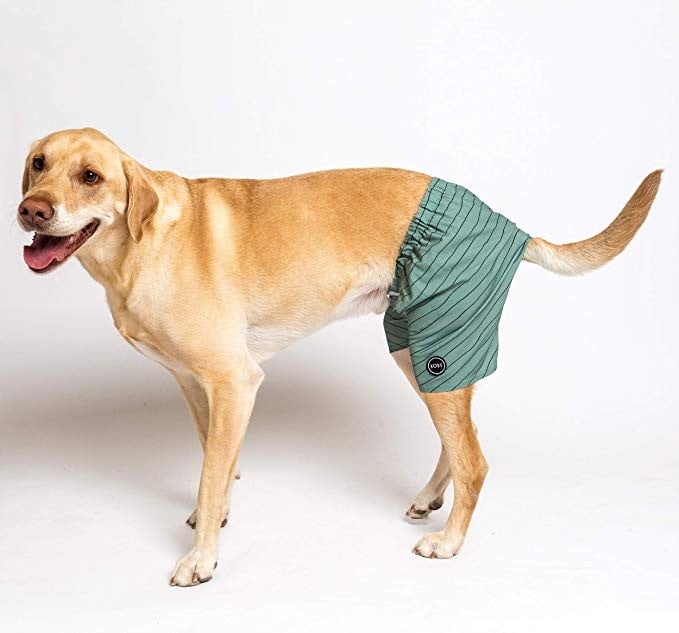 Swim Trunks - For Your Dog
Swim Trunks - For Your Dog
A company called Kove that specializes in recycled plastic garments has now created swimming trunks or shorts for dogs. Each pair of swim trunks is made out of eight plastic bottles. It also includes spandex for some stretch, which is also a quick-drying material. The company also makes a men's swimsuit made of identical fabric.
AKC Honors President Bush's Dog
The American Kennel Club has honored President George H.W. Bush's service dog, Sully, as the recipient of the 2019 AKC Paw of Courage Award in recognition of his loyalty, dedication and distinguished service. Last month, Sully, who is now just over two years old, joined the Walter Reed Bethesda Facility Dog Program as a Navy Hospital Corpsman Second Class where he will provide interactive care for patients and staff.
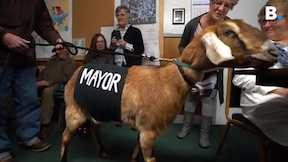 Goat Defeats Dog in Honorary Mayor Election
Goat Defeats Dog in Honorary Mayor Election
The Vermont town of Fair Haven has elected its first animal mayor, a 3-year-old Nubian goat named Lincoln. Fair Haven doesn't have a human mayor, so everyone is really excited about Lincoln who bested the second-place finisher, a dog named Sammie, by only two votes.
 Listen to the entire Podcast of this show (#1008)
Listen to the entire Podcast of this show (#1008)





